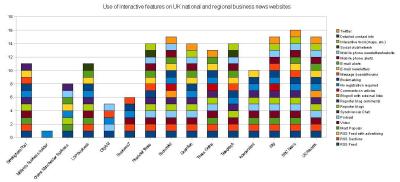I’m still ferverish and grumpy so if this turns into a rant you’ll know why!
The Guardian columnist and former Daily Mirror editor Roy Greenslade is leaving the National Union of Journalists because he disagrees with its stance on Web 2.0*.
His reasons for doing so, outlined in his blog, are interesting and I have to say that, on the whole, I agree with him.
Greenslade basically takes the NUJ to task for trying to protect traditional newspaper jobs in a world that is rapidly moving online.
I cannot, in conscience, go on supporting this crucial plank of NUJ policy when it is so obvious that online media outlets will require fewer staff. We are surely moving towards a situation in which relatively small “core” staffs will process material from freelances and/or citizen journalists, bloggers, whatever (and there are many who think this business of “processing” will itself gradually disappear too in an era of what we might call an unmediated media).
But that’s only part of the problem. It is also clear that media outlets will never generate the kind of income enjoyed by printed newspapers: circulation revenue will vanish and advertising revenue will be much smaller than today. There just won’t be the money to afford a large staff.
The NUJ argues that it sees Web 2.0 as an opportunity, but that it does not want large corporate media groups to use this as a cost-saving opportunity to cut jobs, thereby lowering journalistic standards.
But frankly most large corporations in any industry will seize upon an opportunity to save money.
If you’re a chief executive it’s all about the shareholder value: look at Heinz, Peugeot and Lil-lets moving out of the West Midlands. Protests by unions made little difference to their decisions to close factories in the region and cut jobs.
Until journalistic standards start to directly effect revenue (which comes mainly from advertising), then what economic reason is there to retain journalists? Especially if you are finding it increasingly hard to attract advertising.
So yes, I imagine Web 2.0 will change the face of journalism within large media organisations. I think small teams aggregating and checking the facts of blog posts and forums may well be something we see in the future.
But does that signal the death of a trade?
I don’t think so. I suspect that journalism will diversify and take on new forms, rather than follow the old structures of the past.
The established brands will remain in this cut down form, but advertising is a devious and capricious bedfellow. Some of it will follow its target audience online to specialist news sites run by smaller, leaner, news teams. Some journalism will probably move into the third-sector and operate not-for-profit.
I think there will be an increase in mercenary journalism, where interested parties pay to have a story written and published. I also imagine we will lose some of our best talent to the comfort and security of PR – but this was already happening prior to Web 2.0.
As for other possible models for journalism of the future, I do not have the foresight nor the intelligence to dream them up. This is where I think the NUJ should really be picking up the mantle.
I have had only one exprience of an NUJ debate on new media, at a breakfast meeting during the annual conference in Birmingham. The general theme was regressive and fearful – a lot of old hacks worried about how it may effect their jobs.
I do sympathise to some extent, but only, I think, as far as any person with no prospect of a final salary pension can. Mostly I found it alienating.
For me Web 2.0 is an exciting prospect for journalists to intermingle with readers in a way never seen before. It’s an opportunity to use our collective knowledge to produce more in-depth and searching articles.
All this blabbing on about current journalism being a skill that must be preserved and pickled in aspic is annoying and a waste of time.
I want to be excited by the future of my industry, not fearful and I want my union to help shape it, not bury its head in the sand and hope it never comes.
*thanks bounder

